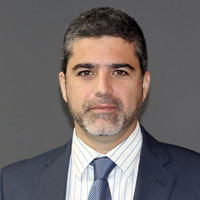Since the origin of our species, human beings have always been highly motivated to investigate the unknown. When we speak about explorers and adventurers, everyone thinks of very famous people like Columbus, Elcano, Livingston, Cook, Hillary, Amundsen…
As far as explorers go, the indisputable protagonists of the 21st century will be astronauts. The solar system is the undisputed space where adventurous men and women will learn about new environments and realities on behalf of all humanity. This is not just a huge challenge, but a great responsibility for both the people who will go and for all the professionals who must ensure that those chosen are able to overcome the challenges that are presented to them, which will require them to have a wealth of personal resources and the right training.
Not just anyone will do; rather, the profile of future astronauts imposes stringent physical, psychological, academic, experience and language requirements.
To get the best people, space agencies are increasingly demanding when it comes to recruiting and selecting future space travellers. Without going any further, looking at the European Space Agency (ESA) or NASA shows that the candidates chosen must be versatile people who satisfy minimum requirements in different areas.
On the one hand, in terms of nationality, age and gender criteria: just like NASA, ESA only allows candidates from Agency member states, which include Spain, France, the United Kingdom and Germany.Of course, there are no restrictions on gender. As for the ideal age for starting training, candidates between 27 and 37 years of age are preferred.
Given the increasing rigours of space missions, it is unavoidable that important physical criteria be part of the equation. In the 20th century, astronauts almost always spent just a few hundred hours in a spacecraft, but nowadays, after the peak in space stations, missions last for many weeks. If we are to send astronauts to Mars, we are talking about years of space travel.
Spending months, or even years, in a space capsule or space station, with the effect of weightlessness, among other things, is a highly demanding test, imposing physical and medical challenges that are very difficult to meet. Apart from a standard height (between just over 1.55 m and approximately 1.90) and normal weight, candidates must undergo an exhaustive physical exam that covers the cardiovascular, muscular and vestibular systems. Their senses must also function perfectly, especially visual acuity, which must be 20/20 or better. They also have to undergo stress tests to prove that they have the appropriate physical qualities.
Personality requirements are also very important: an astronaut must be ready to work under pressure and in a team, in extreme conditions and for a long time. Because of this, their personality must be characterised by high emotional stability, resilience, motivation, sociability and flexibility. They must be unaggressive and capable of creating and sustaining, together with their colleagues, a peaceful working environment that is conducive to long-term missions in confined spaces.
There are four major factors for which astronauts must be prepared from a psychological standpoint. The first is the symptoms and discomfort caused by microgravity, which take their toll and turn into a cause of mental fatigue; second is the isolation from both loved ones and the world in general, which forces them to live with a few individuals for a long period of time in a confined space many kilometres away from Earth; third is a lack of rest and sleep, which obviously also influences mood and character; and finally, the stress in general experienced by the astronaut due to the requirements of the mission, including the previous points.
That is why, after lengthy personal interviews and personality tests, astronauts, once chosen, are monitored throughout their training. This monitoring is even part of the process of selecting the fortunate few who will eventually travel beyond the Earth.
Their professional and academic background is also essential. In addition to a university degree, astronaut candidates must have at least three years of professional experience in one of the areas defined as a space-related discipline, and in which the candidate must have excelled.
There are accepted specific profiles, such as test pilots and flight engineers, who are usually directly admitted for flight and pilot functions. Knowledge requirements are also being developed for highly applied space disciplines such as robotics, biology and nanotechnology, along with the traditional language requirements. In this regard, a European astronaut must have a very high level of English. In addition, to date, astronauts who spoke Russian were also at a significant advantage, given the extremely high level of cooperation and contact with Russian cosmonauts. We will have to see what the future has in store.
As a paradigmatic example of preparing for a space adventure, we would be remiss not to mention Alyssa Carson. This young American is a firm candidate to become the first human to step on Mars, as long as the United States remains the top space power and achieves it, with permission from China or an international space consortium. From a very young age, Alyssa knew she wanted to be an astronaut. She has been constantly learning and training, and is currently the ambassador of the private project Mars One, which aims to colonise Mars. A candidate for admission to the International Space University, she currently combines her studies with a command of languages useful to her objective: English, Mandarin, Spanish, Russian and French. NASA considers her a strong candidate for the mission of conquering Mars, which would happen around 2033.



